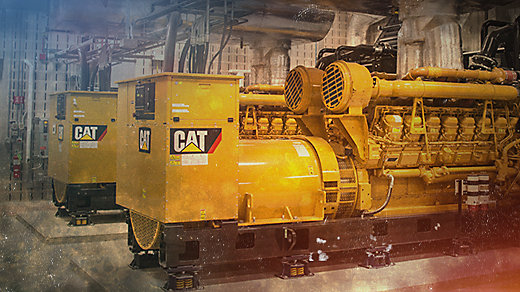The AI Supercycle
The AI supercycle is minting unexpected winners in the strangest corners of the industrial world — not NVIDIA or OpenAI, but the people, companies, and industries you wouldn’t readily think of as dynamic cogs keeping the AI supercycle narrative spinning. We’ve seen so many that we’re launching this new recurring section in the newsletter. Without further ado, the two nominees this week:
001 / The Aircraft Boneyard Raiders

ProEnergy, a turbine services company in Sedalia, Missouri, saw an arbitrage that everyone else missed (or, thought was impossible).
- The obvious problem: hyperscalers need gigawatts now. New gas turbines from GE, Siemens, and Mitsubishi have lead times stretching to 2029 and beyond, with some hyperscalers paying $25M just to get in line. All the while, grid interconnections are hitting eight to ten years in some regions.
- An unlikely solution: airlines are retiring CF6-80C2 jet engines (the legendary high-bypass turbofans that powered Boeing 767s, 747s, and Airbus A310s across oceans for three decades) as they modernize widebody fleets.
ProEnergy spent seven years and $115M developing a process to fully overhaul these CF6-80C2 engine cores, matching them with new aeroderivative components, mounting them onto trailers with integrated switchgear, and delivering 48MW units that can be stood up in 30 days. The company has sold 21 units (1+ GW total) to Texas datacenters that will run 24/7 for the next 5-7 years while awaiting grid connections. Since 2020, ProEnergy has fabricated 75 PE6000 packages, with another 52 in assembly or on order.
The timing is brilliant. Airlines will retire ~1,000 of these engines this decade, each one a latent power asset waiting for exactly this kind of creative repurposing.
002 / The Yellow Bulldozer Company

Caterpillar is a century-old company that’s synonymous with its yellow bulldozers. But going off sales, it’s more of a power company than it is a bulldozer company. Wall Street and the rest of us are only now catching on.
- The flippening: Last year, for the first time in company history, Caterpillar’s Energy & Transportation (E&T) segment (turbines, diesel generators, gas engines, marine power systems) out-earned its Construction Equipment unit ($28.9B to $25.5B). And last quarter, power generation sales jumped 31% while construction grew just 7%. E&T’s $8.4B in Q3 sales blew out analyst expectations by $1B+ and helped send $CAT to all-time highs.
- What’s driving this? Hyperscale datacenter (DC) campuses often call for 50+ diesel generator sets per facility at ~$2M a pop, all synchronized and running around the clock. While DCs bought these as emergency insurance, they’re now procuring them as primary power.
Caterpillar, as the #2 vendor of these generators globally, was all too happy to oblige when the hyperscalers came knocking. And it goes beyond diesel gensets: Caterpillar will sell you a complete microgrid with integrated battery storage, renewable capacity, and fuel flexibility. (One recent deal, a Utah DC campus, included 4GW of generation capacity with 1.1GWh of battery storage).
Prime power is the new prime real estate: On Caterpillar’s Q3 victory lap earnings call, CEO Joe Creed was clear about the opportunity: “We’re definitely really excited about the prime power opportunity with data centers. We’re going to see a lot more of this.” The best part for Caterpillar: the $2M equipment sale comes with attached services contracts and decade-long relationships for monitoring, maintenance, optimization, and fuel logistics. Caterpillar’s $40B backlog includes bilions in new DC power orders, positioning the company and its supply chain for years of guaranteed work.
